Hello and welcome back to Retro Freak Reviews. Let’s begin the new year by examining a classic action game that drew inspiration from previous influential games and, in turn, became influential itself. I am referring to Flashback.
Flashback (also known as Flashback: The Quest for Identity in the U.S.) is an action-platform game developed by Delphine Software and initially published by U.S. Gold. Originally released in 1992 for the Commodore Amiga, the game was re-released on the 3DO, MS-DOS, Sega Genesis/Megadrive, and SNES platforms. In 1994, it was ported to the CD-i, FM Towns, PC-98, Acorn 32-bit, and Sega CD/Mega CD systems. The game saw another re-release in 1995 for the Jaguar and Macintosh. Subsequent ports were made for iOS in 2009 and the Sega Dreamcast in 2017.
According to Paul Cuisset, the creative director of the game, U.S. Gold had acquired the license for The Godfather in the early 90s. They approached Delphine to create a video game adaptation for Sega’s new console, the Megadrive/Genesis. However, Cuisset and the development team, influenced by the work of their colleague Eric Chahi on Another World, chose to draw inspiration from various science fiction films, like Total Recall, They Live, Blade Runner and others and instead developed a sci-fi action platform game.
After presenting U.S. Gold with a demo (which would later become the game’s first stage) with no clear resemblance to The Godfather, U.S. Gold granted Cuisset and his developers permission to proceed with the game’s development. The game was initially designed for the Megadrive; however, due to the necessity of manufacturing a special 24-megabit cartridge, it was first launched for the Amiga platform.
But before delving into the game, let us first examine the covers:
As illustrated above, this iconic EU cover features a stylized depiction of a laser being discharged towards an individual, with a predominant focus on the eyes. This striking image effectively serves to foreshadow the storyline of the game.
The US cover above, while not as iconic as the EU cover, focuses more on the sci-fi aspect, with elements taken from the game. These two covers were used for almost every release, except the CD versions:
The cover above, despite being also centred around science fiction, depicts elements not found in the game (namely the lower half). Maybe this is why it is not as widely remembered as the other covers.
Anyway, it’s time to boot this remembrance:
As depicted above, the game begins with our central character, Conrad B. Hart, evading several pursuers. He successfully evades them by utilizing an advanced motorcycle, only to have it targeted and destroyed over a jungle.
The game proceeds with the title screen, which shows the EU cover and a menu where you can select the difficulty level, and password system or start a new game. When starting a new game, a cutscene shows Conrad awakening in the jungle and knocking down a cube.
The primary goal of the initial stage is to retrieve the enigmatic cube, decipher its message, and find a means to escape the jungle. In pursuit of this, Conrad relies upon a gun with infinite ammunition and a portable shield with four charges, effectively serving as Conrad’s life bar. As you begin playing, you’ll see the extensive range of Conrad’s motions and the seamless fluidity of his animations.
You can execute a variety of manoeuvres, such as running, walking, jumping diagonally and upwards, drawing and firing your firearm, rolling, grabbing and utilizing objects, and more. Additionally, there is an option to zoom in during certain action sequences, although I found it to be of limited usefulness. Delphine took inspiration from the rotoscoping technique utilized in Prince of Persia and Another World to animate all of Conrad’s movements, resulting in a seamless and flowing visual presentation.
The initial stage is well-suited for understanding the gameplay mechanics, as Conrad must combat mutants, evade traps, and navigate to the nearest city, and subsequently, Earth. Additionally, the player is required to interact with various objects, each accompanied by a brief cutscene. The first stage is relatively compact and serves as an ideal introduction to the game.
The second stage presents a significantly greater challenge, requiring mastery of more advanced mechanics such as running and jumping to reach upper platforms, backtracking, and interacting with characters and the environment. It is structured into multiple mini-missions, which account for its extended duration. Fortunately, checkpoints are available for saving progress in the event of Conrad’s demise. However, they do not retain overall progress. Hence, upon restarting the game, players will start at the beginning of each level with the provided password.
Facing an enemy in the jungle
At the beginning of the second stage, Conrad’s backstory is disclosed, and personally, I would have preferred if this enigma was unveiled at a later stage. Additionally, a personal shield is provided to evade enemy fire, a necessity due to the introduction of more formidable adversaries at this stage.
The game is structured into 7 levels, each progressively more challenging as it introduces new adversaries, obstacles, and environmental puzzles. Players can obtain new tools (like a personal teleporter) to navigate the levels and vanquish their foes. Furthermore, while the levels maintain a consistent structure and design, they each possess unique visual characteristics.
Also, there is a wide variety of adversaries, spanning from mutants to robots, androids, and the main antagonists. Their level of challenge and quantity escalates with each stage and difficulty level (personally, I hate the floating orbs), necessitating the use of tactics and quick reflexes when confronting them (crouching and rolling proves especially advantageous).
Taking the subway
Now, for the technical aspects: The graphics are striking, featuring fully hand-drawn designs for the stages and rendered cutscenes. It is worth noting that the stages do not have animation and are divided into non-scrollable screens, a decision made to ensure the game’s fluid animation, as explained by Cuisset. Additionally, the sprites of Conrad and the enemies are detailed and diverse.
The exceptional sound effects contribute to the atmosphere of the stages and the overall gameplay. However, there is a lack of music during the gameplay, with music only being present during the cutscenes. Due to this limitation, I consider the music only of average quality.
The most notable technical aspect of the game, in my opinion, besides the animation, is the precise controls. Regardless of whether one opts for a keyboard, joystick, or gamepad, across all versions and ports, the controls exhibit exceptional responsiveness. Given the nature of the game as an action-oriented one, I highly recommend utilizing a gamepad for an optimal experience.
Welcome to the Death Tower Show! Careful with the mines.
My only concerns with the game, which are more akin to minor nitpicks, pertain to the length of the second stage and the inability to save progress mid-stage, despite the presence of checkpoints. Apart from these points, I highly recommend the game. Should you wish to play it in your own browser, you can do so by accessing it here. It is worth noting that this version is the PC CD-ROM edition, featuring 3D-rendered cutscenes and an enhanced music score.
The review doesn’t end here. Flashback underwent extensive porting to various platforms. For instance, the original Amiga release closely mirrors the gameplay of the DOS version but features smaller cutscenes. The Megadrive and SNES versions exhibit similarities to the DOS version also, with the latter boasting superior music and sound quality, as well as minor alterations. Notably, the Mega CD version introduced 3D-rendered cutscenes, a new musical score that plays throughout the gameplay, and voice-over. This version was subsequently adapted to other CD-based platforms such as the PC CD-ROM, CD-i, 3DO, and others.
From the PC CD-ROM intro sequence
Flashback garnered significant critical and fan acclaim, establishing itself as one of the foremost action games of the 1990s. Subsequently, its sequel, Fade to Black, was released in 1995. The game underwent a remake in 2013 and was remastered in 2018, culminating in the much-anticipated (but poorly reviewed) new sequel Flashback 2 in 2023.
I have played the demo of Fade to Black and will reserve my judgment for a future review. While I have not engaged with the remake, its reception has been reportedly unfavourable. However, I have played the remaster, and I highly recommend it over the original version due to the numerous quality-of-life enhancements it introduced, addressing most of the issues I encountered in the original game and offering additional extras. The remaster can be purchased here on Steam or here on GOG. Also, it plays great on a Steam Deck!
The inclusion of REminiscence, a source port of Flashback, is also desired. This software is compatible with several versions of the game, although it necessitates the use of the original data files to play it.
Well, I hope you’ve enjoyed this review. I’m not going to write a lot of reviews throughout this year but I do have a couple of big reviews planned and a probable retrospective. Until then, Happy New Year and keep on playing.
Links 1) My Reviews!




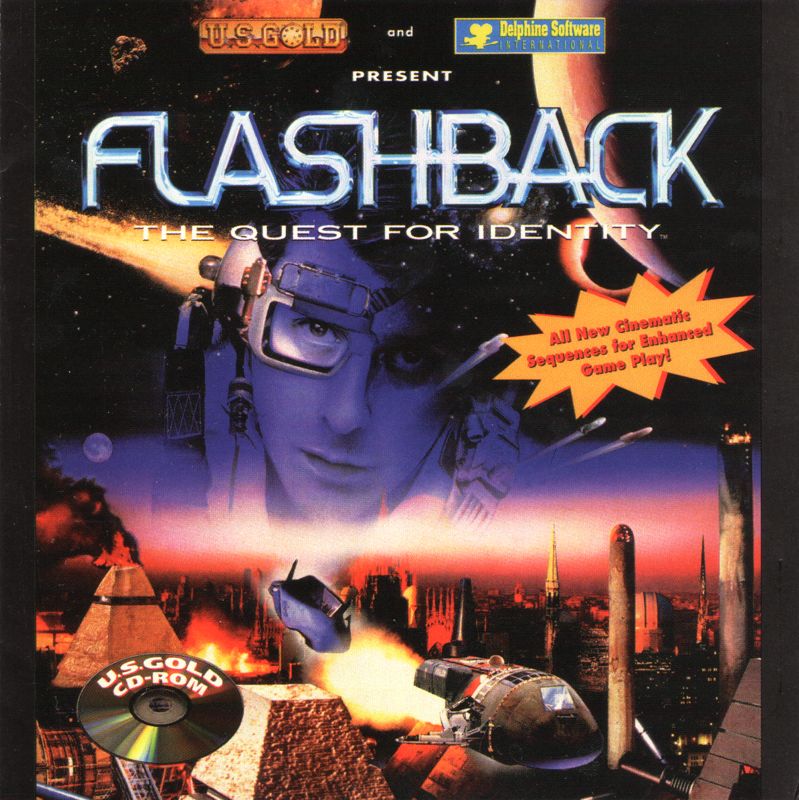
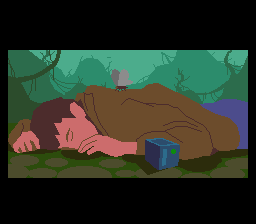
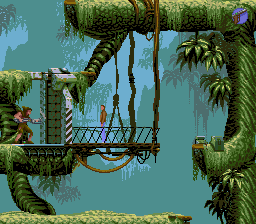
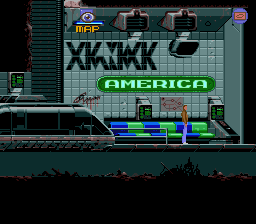
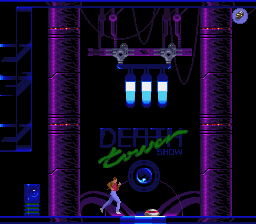
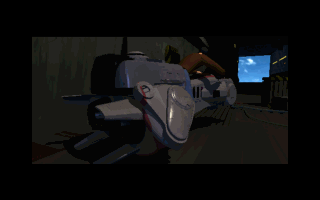
My favorite
ReplyDeleteThere are missing links in the review.
ReplyDeleteSite wasn't showing links correctly, should be working fine now - thanks for the heads up :)
DeleteI've very fond memories of getting this for my SNES for Xmas 1993. Such happy days back then.
ReplyDeleteI never had much patience for Flashback. I thought it was fine the first time I played it but it often felt a bit of a chore to control as most of these rotoscoped games did.
ReplyDeleteI adored this game in the 90's. I played it through to completion several times on my 286 (and tweaked XMMS boot disk) with black and white monitor - which made the death tower level extremely challenging even after my dad turned the brightness pot a bit further by disassembling the CRT! I have played all of the retro versions through to completion, but not yet checked out the modern stuff, other than the Nintendo Switch release which I pre-ordered and it was a total waste of money, leading me to believe there was little to no QA nor care put into it. Great review, thanks for sharing. Happy new year all!
ReplyDelete